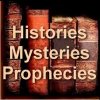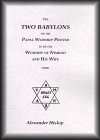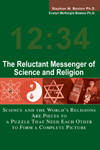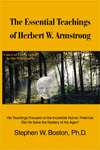
Introduction
Preface Second Ed.
Preface Third Ed.
Note by the Editor
The Two Systems
Trinity in Unity
Mother and Child
The Child in Assyria
The Child in Egypt
The Child in Greece
Death of the Child
Deification of the Child
Mother of the Child
Christmas
Easter
Nativity of John
Feast of thr Assumption
Baptismal Regeneration
Justification by Works
Sacrifice of the Mass
Extreme Unction
Purgatory and Prayers for the Dead.
Idol Processions
Relic Worship.
Clothing and Crowning of Images.
The Rosary
Lamps & Wax-candles
Sign of the Cross
Sovereign Pontiff
Priests, Monks, and Nuns.
Great Red Dragon
Beast From the Sea
Beast from the Earth
Image of the Beast
Number of the Beast
Invisible Head of the Papacy
Woman with Golden Cup
Hebrew Chronology
Shing Moo and Ma Tsoopo of China.
Ala-Mahozim
Meaning of the name Centaurus
Olenos, the Sin-Bearer
Identification of Rhea or Cybele and Venus
Virgin Mother of Paganism
Goddess Mother as a Habitation.
Meaning of the name Astarte.
Oannes and Souro
The Identity of the Scandinavian Odin and Adon of Babylon
Stripping of the Clothes of the Initiated in the Mysteries
Zoroaster, the Head of the Fire-Worshippers
Story of Phaethon
Roman Imperial Standard of the Dragon of Symbol of Fire-worship
The Slaying of the Witness
Attes, the Sinner
Click here for The Reluctant Messenger (Host Site)
APPENDIX - Attes, the Sinner.
NOTE R, p. 274. Attes, the Sinner.
We have seen that the name Pan signifies "to turn aside," and have concluded that as it is a synonym for Hata, "to sin," the proper generic meaning of which is "to turn aside from he straight line," that name was the name of or first parent, Adam. One of the names of Eve, as the primeval goddess, worshipped in ancient Babylon, while it gives confirmation to this conclusion, elucidates also another classical myth in a somewhat unexpected way. The name of that primeval goddess, as given by Berosus, is Thalatth, which, as we have seen, signifies "the rib." Adam's name, as her husband, would be "Baal-Thalatth," "Husband of the rib;" for Baal signifies Lord in the sense frequently of "Husband." But "Baal-Thalatth," according to a peculiar Hebrew idiom already noticed (p. 38, Note), signifies also "He that halted or went sideways." * This is the remote origin of Vulcan's lameness; for Vulcan, as the "Father of the gods," * needed to be identified with Adam, as well as the other "fathers of the gods," to whom we have already traced him. Now Adam, in consequence of his sin and departure from the straight line of duty, was, all his life after, in a double sense "Baal-Thalatth," not only the "Husband of the rib," but "The man that halted or walked sideways." In memory of this turning aside, no doubt it was that the priests of Baal (1 Kings xviii. 26) "limped at the altar," when supplicating their god to hear them (for that is the exact meaning in the original of the word rendered "leaped"--see KITTO'S Bib. Cyclop, vol. i. p. 261), and that the Druidic priests went sideways in performing some of their sacred rites, as appears from the following passage of Davies:--"The dance is performed with solemn festivity about the lakes, round which the sanctuary the priests move sideways, whilst the sanctuary is earnestly invoking the gliding king, before whom the fair one retreats upon the veil that covers the huge stones" (Druids, p. 171). This Davies regards as connected with the story of Jupiter, the father of the gods, violating his own daughter in the form of a serpent (p. 561). Now, let the reader look at what is on the breast of the Ephesian Diana, as the Mother of the gods (ante, p. 29), and he will see a reference to her share in the same act of going aside; for there is the crab, and how does a crab go but sideways? This, then, shows the meaning of another of the signs of the Zodiac. Cancer commemorates the fatal turning aside of our first parent from the paths of righteousness, when the covenant of Eden was broken.
The Pagans knew that this turning aside or going sideways, implied death--the death of the soul--("In the day thou eatest thereof, thou shalt surely die"); and, therefore, while at the spring festival of Cybele and Attes, there were great lamentations for the death of Attes, so on the Hilaria or rejoicing festival of the 25th of March--that is, Lady-day, the last day of the festival--the mourning was turned into joy, "on occasion of the dead god being restored to life again" (DUPUIS, Origine de tous les Cultes, tom. iv. pt. 1, p. 253, Paris, L'an iii de la Republique [1794]). If Attes was he that by "his turning aside" brought sin and death into the world, what could the life be to which he was so speedily restored, but just that new and divine life which enters every soul when it is "born again," and so "passes from death unto life." When the promise was given that the seed of the woman should bruise the serpent's head, and Adam grasped it by faith, that, there can be no doubt, was evidence that the divine life was restored, and that he was born again. And thus do the very Mysteries of Attes, which were guarded with special jealousy, and the secret meaning of which Pausanias declares that he found it impossible, notwithstanding all his efforts, to discover (Lib. vii., Achaica, cap. 17), bear their distinct testimony, when once the meaning of the name of Attes is deciphered, to the knowledge which Paganism itself had of the real nature of the Fall, and of the essential character of that death, which was threatened in the primeval covenant.
This new birth of Attes laid the foundation for his being represented as a little child, and so being identified with Adonis, who, though he died a full-grown man, was represented in that very way. In the Eleusinian Mysteries, that commemorated the rape of Proserpine, that is, the seduction of Eve, the lamented god, or Bacchus, was represented as a babe, at the breast of the great Mother, who by Sophocles is called Deo (Antigone, v. 1121, Oxon. 1808). As Deo or Demete, applied to the Great Mother, is evidently just another form of Idaia Mater, "The Mother of Knowledge" (the verb "to know" being either Daa or Idaa), this little child, in one of his aspects, was no doubt the same as Attes, and thus also Deoius, as his name is given (ante, p. 20). The Hilaria, or rejoicing festival of the 25th of March, or Lady-day, owed its gladness to the Annunciation of a birth yet to come, even the birth of the woman's seed; but, at the same time, the joy of that festival was enhanced by the immediate new birth that very day of Attes, "The sinner," or Adam, who, in consequence of his breach of the covenant, had become dead in "trespasses and sins."
Previous | Home

or The Papal Worship Proved to be the Worship of Nimrod and His Wife
$3.99 Kindle eBook
Buy from Amazon.com
The Essential Teachings of Herbert W. Armstrong
His Teachings Focused on The Incredible Human Potential. Did He Solve the Mystery of the Ages?
New Book about HWA's Teachings. Recommended!

